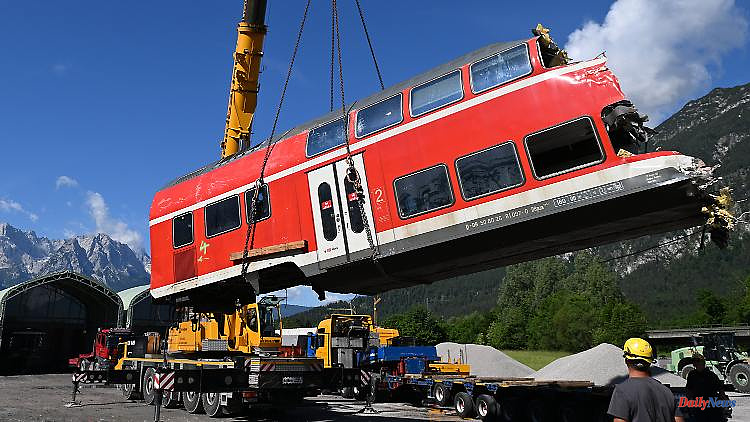A regional train derailed near Garmisch-Partenkirchen in early June, killing five and injuring dozens. When looking for the cause, the concrete sleepers also come into focus. The railway is now checking this nationwide. Passengers must be prepared for delays.
After the accident in Garmisch-Partenkirchen, Deutsche Bahn had to replace concrete sleepers en masse and also block sections of the route. According to the state-owned company, initial findings from technical reports had suggested that there was a manufacturer error on the sleepers. "Some of the sleepers have irregularities in the material properties." Wherever anomalies were found during the examination of 200,000 sleepers, people have already reacted with slow-moving sections: "Diversions, longer travel times or even rail replacement traffic cannot be avoided through the work."
The first thresholds have been replaced. The aim is to make almost all routes passable again by the end of the year. However, the exchange will last until 2023. The federal states of Bavaria, Saxony, Saxony-Anhalt and Thuringia are primarily affected. The railway assumes costs in the hundreds of millions. At the beginning of June, a regional train from Garmisch-Partenkirchen to Munich derailed. Five people, including a 14-year-old, died. 16 people were seriously injured, about 50 slightly.
The cause of the accident is still open, and the concrete sleepers came into view when searching for it. A printed matter by the Bundestag's Transport Committee speaks of a rail shift and "partially damaged concrete sleepers". The sleepers are said to have broken, causing the rails to shift under the weight of the trains.
There are currently restrictions at 165 points in the rail network, the railway said. During the work, priority would initially be given to the routes that were particularly busy and of great importance for long-distance, regional and freight traffic in the entire network. The exchange hits the railway network in an already extremely tense situation. Due to low water, many ships cannot sail and industry and commerce want to switch to rail.
However, this is already overloaded, to which military transports in the course of the Ukraine war and the already dilapidated network in many places also contribute. In addition, the railway also suffers from a lack of staff. In autumn and winter, the federal government is also increasingly relying on coal and oil transport for power plants, since gas is to be used less for electricity generation. These transports are to be given priority on the network.












